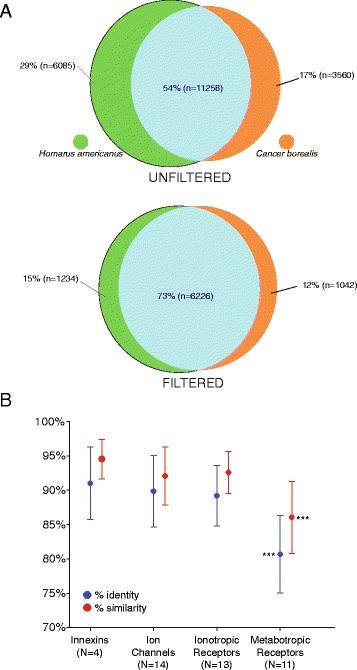Fig. 5.

Comparison of overlap of C. borealis and H. americanus neural transcriptomes. a VennBLAST comparison of C. borealis and H. americanus neural transcriptomes. Alignment of top hit sequence comparison was performed with a tblastx of both C. borealis and H. americanus against a common top hit species, D. pulex, allowing for a highly annotated crustacean database for reference. Filtering added another further stringency on top of that from the tblastx by requiring an amino acid identity percent of 70 % and E-value threshold of 1.0e-5. b Percent amino acid sequence identity (blue points) and similarity (red points) for selected neural function related gene products. For the specifically curated gene products described in the remainder of the study, we found very high (>90 %) amino acid sequence identity and similarity between C. borealis Innexins (gap junction proteins), ion channels, and ionotropic receptors and the corresponding sequence in H. americanus. We saw a significant drop (one-way ANOVA with post-hoc t-tests) in similarity in sequences for metabotropic receptor subtypes. This indicates that channel proteins (including gap junction, voltage-gated, and ligand gated) show more highly conserved amino acid sequence than receptors that work via intracellular signal transduction cascades. *** indicates significant difference (P < 0.001, t-test) between metabotropic receptors and each of the other three groups. None of the other groups were significantly different from one another
